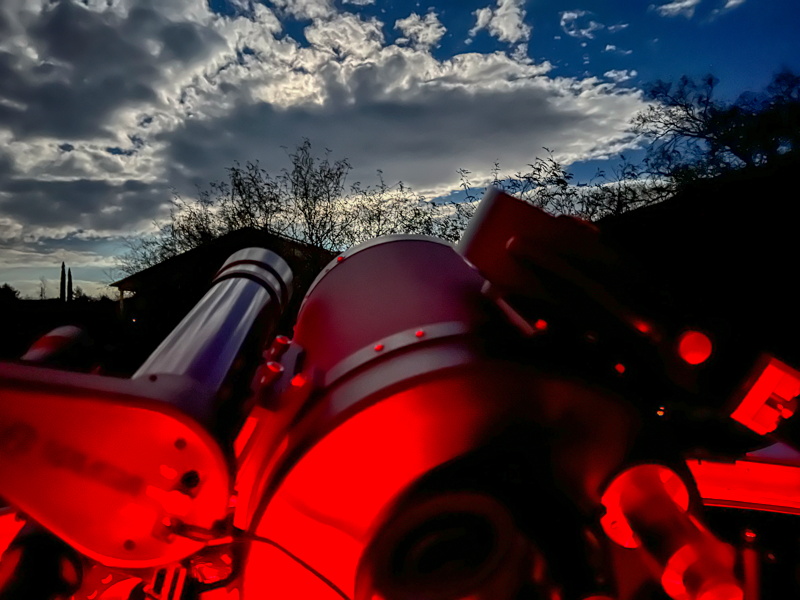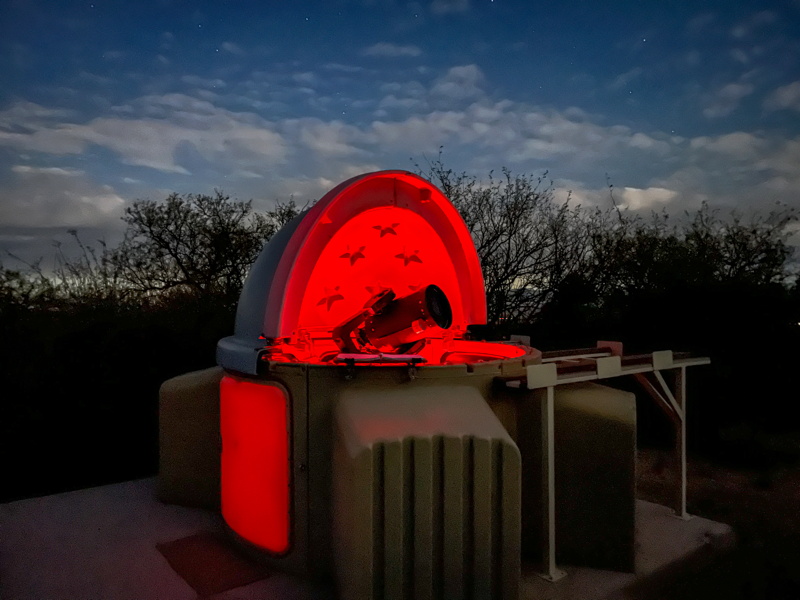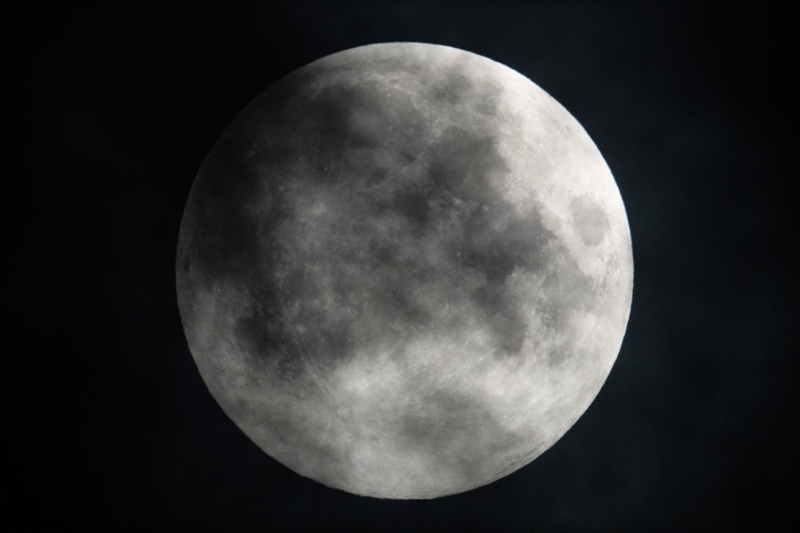Full Moon Occultation of Mars
Posted: 8 December 2022
Clouds returned on Tuesday, 6 December 2022. Wednesday, 7 December, dawned mostly cloudy but the sky began clearing mid-day. However, by sunset the sky did not looking promising for the Mars occultation.

|
Open: Wednesday, 7 December 2022, 1815 MST Temperature: 54°F |
Session: 1810 Conditions: Mostly cloudy, 57% humidity |
Equipment:
12" f/8 LX600 w/StarLock
2" 24mm UWA eyepiece
2" 4X Powermate
Camera:
iPhone 13 Pro Max
D850 DSLR
SYNCed observatory clock and D850 DSLR to WWV time signals in preparation for the Mars occultation.
Prepared the D850 DSLR for prime focus imaging.
1831 MST: LX600 ON, StarLock OFF, High Precision OFF.
1834 MST: Slewed the telescope to Mars. This is the sky with the Full Moon and Mars obscured by clouds, taken with an iPhone 13 Pro Max.

Mounted the D850 DSLR at prime focus of the 12" telescope. I then stepped outside of the observatory to check on the cloud conditions. This was the view to the northwest, taken with the iPhone.

I then began waiting for the Moon or Mars to become visible so that I could focus the telescope.
1853 MST: I was finally able to focus on the Moon, as seen in this cloud covered Moon image taken at prime focus.

1855 MST: There was some clearing overhead.
1911 MST: With the Moon and Mars now visible I viewed them using 12x50 binoculars. Pretty sight.
1915 MST: The Moon approaching Mars (1/500sec, ISO 200).

Mounted the D850 DSLR at prime focus + 4X Powermate.
1921 MST: The sky was now mostly overcast!
The clouds would frequently hide Mars and the Moon as the time of the occultation (1932 MST) approached and during the occultation. I did a 1080p, 60fps video recording at 1/320sec, ISO 2500. These images are from the video.


Click or tap on images for larger version
This is 49 seconds of the video of the disappearance of Mars. The view was hampered by the clouds.
Click or tap on image to view video (18.2 MB)
I then began waiting for the occultation to end (2027 MST). There were lots of clouds at times, as seen in this iPhone photo.

As time of the reappearance of Mars approached it became necessary to refocus the telescope due to the air temperature getting colder. Unfortunately, that was difficult to do with all the clouds that would frequently hide the Moon.
The Moon and Mars became visible after the reappearance of Mars started. I managed to get a video recording, 1080p, 60fps, 1/320sec, ISO 2500. Here are images from the video.



Click or tap on images for larger version
This is 31 seconds of the video of the reappearance of Mars. The view was hampered by clouds.
Click or tap on image to view video (14.2 MB)
I then mounted the D850 DSLR at prime focus. Again it was difficult to get a focus as the Moon was frequently hidden by clouds. So I had to wait until the Moon was clear of the clouds.
2041 MST: The Moon and Mars (1/500sec, ISO 200).

2049 MST: Viewed the Moon and Mars, 102X. Both were in the same field-of-view. Nice view.
2050 MST: LX600 OFF.
|
Close: Wednesday, 7 December 2022, 2105 MST Temperature: 45°F |
Session Length: 2h 50m Conditions: Partly cloudy, 67% humidity |
Comments are welcome using Email. Twitter users can use the button below to tweet this report to their followers. Thanks.
Cassiopeia Observatory Home Page
Copyright ©2022 Michael L. Weasner / mweasner@mac.com. Email Etiquette.
URL = http://www.weasner.com/co/Reports/2022/12/08/index.html
